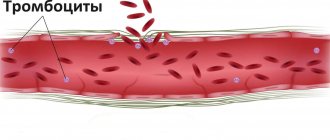Role and types of leukocytes
The production of leukocytes takes place in the red bone marrow, and from there they enter the bloodstream, and then, if there is a need for this, then into the intercellular space. Having received a signal about developing inflammation or the entry of an allergen, white cells instantly concentrate at the site of its outbreak and direct all their forces to eliminate pathogenic agents.
Leukocytes in the body:
- detect harmful particles or microbes, record the place and time of their introduction;
- neutralize and absorb foreign microorganisms and substances;
- destroy viruses and bacteria that have entered the bloodstream;
- fight substances that cause allergic reactions;
- assist in tissue restoration after injury.
In addition, these cells are responsible for maintaining a level of general immunity sufficient for normal functioning, as well as strengthening immune memory. They protect the body from various pathogens that were still able to penetrate inside.
Based on the number of leukocytes in the blood, a preliminary assessment of the condition of both an adult and a child’s body is carried out. This information reflects the ability to resist various infections, and also indicates the presence of signs of pathological processes and any disorders.
In their composition and structure, leukocytes are not the same. They are represented by five types of cells that have different structures and, accordingly, different (relatively) functions. Leukocytes are divided into neutrophils, lymphocytes, monocytes, eosinophils and basophils.
Lymphocytes - neutralize or eliminate bacteria, viruses and their toxic effects on the cells of the human body. Antibodies produced by lymphocytes are directed at specific types of viruses or bacteria. Monocytes - perform the function of phagocytosis, that is, they absorb and eliminate harmful substances and microorganisms, as well as waste products they secrete.
Neutrophils - secrete mature (segmented, SN) and immature (band, PN) types of these cells. The former absorb viruses, bacteria and other pathogens, neutralize them, and disintegrate along with the pathogenic cell. To replace the destroyed neutrophils, segmented neutrophils, that is, new ones, mature from the band neutrophils.
Eosinophils - destroy and then absorb foreign proteins that enter the body, and also synthesize antihistamines. This is why the level of eosinophils increases during allergic reactions, the fight against various types of parasites and their larvae.
Basophils function as a kind of scouts. They detect pathogens or allergens that have entered the body, and produce highly active substances that bind and neutralize the foreign agent. Such actions lead to the development of the inflammatory process, which attracts other types of leukocytes to the lesion - eosinophils and monocytes.
Based on all of the above, it is clear that each type of white blood cell protects the body from specific pathogens. Therefore, to make a correct diagnosis, it is necessary to take into account not only the total number of leukocytes, but also the number and percentage of each cell type.
In children, changes in the leukocyte formula occur much more often than in adults, since at the initial stages of life their immune system is not yet well formed. Many microorganisms or allergens can have a negative effect on the child, which is manifested in the laboratory by changes in the content of leukocytes.
When does a child need a blood test?
Leukocytes in a child’s blood allow the doctor to suspect a developing pathology at its earliest stages, which significantly increases the chances of a quick cure for the disease. In this regard, children and especially infants are often prescribed examinations that provide the opportunity to assess the level of leukocytes.
In the case when the content of white cells in young patients does not correspond to the norm, the analysis must be repeated in order to avoid inaccuracies, and after confirmation, the reasons for the identified deviations are clarified. In a general blood test (CBC), the number of leukocytes is designated by the abbreviation WBC, and this study also determines the number of each subtype and their percentage of the entire set of white cells.
The determination of leukocytes in a child’s analysis below normal may indicate a dysfunction of hematopoiesis, immunodeficiency, or exhaustion. Whereas an excessive increase often indicates an infectious process, inflammation or chronic leukemia. The main indications for studying the leukocyte formula in a child are as follows:
- increased body temperature not associated with colds;
- viral and bacterial, as well as parasitic infections;
- impaired immune function.
In addition, children are regularly monitored for leukocyte levels in case of leukemia to assess the current condition or correct therapy, as well as for preventive purposes, especially for children who often suffer from colds.
What does it mean if a child has elevated white blood cells?
Leukocytosis is a high level of white cells in the blood of a child or adult.
Important: a slight deviation from normal values may be the result of daily fluctuations in indicators or improper preparation of the patient for the delivery of biomaterial.
If a child has a consistently high level of leukocytes (up to 11-13*109/l), additional diagnostics should be immediately carried out to identify the cause.
Elevated leukocytes in a child’s blood can be observed when:
- penetration of an infectious agent and the development of a disease of a viral or bacterial nature;
- autoimmune pathologies;
- development of a malignant neoplasm with the spread of metastases.
It should be noted that the state of elevated leukocytes in the blood of newborns requires special attention from doctors. This fact is due to unformed immunity, and the inability of the baby to independently cope with even a small number of opportunistic microorganisms.
Features of blood tests in children
There is only one requirement for preparation for the study of leukocyte content in children at the OAC - the study must be carried out on an empty stomach. Ideally, a break between meals should be at least 6–8 hours, but only older children and teenagers can tolerate such a long time. For children 2–6 years old, 4–6 hours will be enough, and newborn children and infants need to take blood immediately before feeding, since usually 3.5–4 hours pass between them.
Reference! On the eve of the test day, older children are not recommended to be given foods that take a long time to digest, and intense physical activity and overwork should also be avoided.
To study the content of leukocytes in the blood of children over 4–6 years of age, blood is taken from the ulnar vein, and from newborn children by puncture of the head or heel vein. In infants and small children, blood can be taken from a finger.
In infants, blood is sometimes taken from the heel
Normal values for children
The normal values of white blood cells for children of different ages are not the same and differ from those of adults. In young patients, the white blood cell count is usually higher. Their number is determined by the leukocyte formula, the values of the components of which change depending on the growth of the child.
Decoding the indicators includes determining the absolute number of all types of white cells and the relative quantity, that is, the part of a specific type in relation to the general indicator. Normally, leukocytes in the blood of a newborn have a high level of lymphocytes - about 60%, while neutrophil cells are reduced to 40%.
What are white blood cells responsible for?
Leukocytes are white blood cells; they do not have a nucleus or their own color. Their function in the body is protective.
White blood cells fight internal and external pathogenic agents , which include infectious agents and other foreign bodies.
Types of leukocytes differ in structure and functions. All of them are combined into two groups - granular and non-granular.
The first includes basophils, neutrophils and eosinophils, and the second includes lymphocytes and monocytes.
Interpretation of results
Exceeding normal levels of leukocytes in children, as well as low values, often indicates various pathologies that require immediate medical attention.
High performance
Elevated white blood cells (or leukocytosis) in children are observed with such pathologies as:
- allergic reactions;
- bacterial infections, sepsis;
- chronic lymphocytic leukemia;
- burns, injuries, shock conditions;
- inflammatory and purulent processes;
- renal colic, diabetic coma;
- malignant neoplasm;
- stage of exacerbation of rheumatism;
- skin lesions: scratches, cuts;
- internal or external bleeding;
- parasitic infestations (giardia, worms).
In addition, leukocytes in the blood of children may be slightly higher during food intake, stressful conditions (prolonged crying or screaming), sudden changes in temperature (hot bath, sauna, hypothermia) and physical activity. And also an increase in white blood cells is sometimes observed after taking certain medications, vaccinations and in the postoperative period.
In such situations, normalization of their levels most often occurs on its own, and treatment is not required. An increase in white blood cells is not always a dangerous sign. Firstly, their increase means the body is actively fighting against pathogenic bacteria or toxins, which indicates the normal functioning of the child’s immune system. Secondly, a high WBC is not a diagnosis, but a good reason for further examination.
The presence of concomitant symptoms is considered a serious indication for additional tests. So, if, with leukocytosis, a child has headaches, decreased activity, weakness, decreased appetite or even refusal to eat, or increased body temperature, then a full diagnosis should be carried out immediately.
Low values
A condition where the leukocyte count is low is called leukopenia, and like leukocytosis, it requires additional examination and determination of the cause for subsequent therapy. A low level of white cells is no less alarming than a high level, and often becomes an indicator of such pathologies as:
- rubella, chickenpox, hepatitis, mononucleosis, typhus;
- decreased body tone and hypotension;
- acute allergy, anaphylactic shock;
- mental and physical exhaustion;
- radiation sickness, acute leukemia;
- bone marrow damage;
- long fasting.
And also leukocytes can decrease after a long therapeutic course of antibiotics, antispasmodics, anticonvulsants and anti-inflammatory drugs. Causes of leukopenia not directly related to pathologies include poor or unbalanced nutrition, which negatively affects the body's defenses. This also includes vegetarianism and veganism.
Physiological changes in the norm of lymphocytes and neutrophils in a child at different ages
Infants are negatively affected by the lack of sufficient amounts of vitamins and other nutrients in breast milk, and older children are negatively affected by the predominance of sweets in the diet and a decrease in fruits and vegetables. It should be noted that leukopenia is often not accompanied by any signs, so it is difficult to diagnose without a blood test.
What does a decrease or increase mean?
Below normal levels of white blood cells, or leukopenia , can occur in the following conditions:
- infectious diseases (influenza, rubella, measles, mumps, tuberculosis, HIV and others);
- purulent processes (phlegmon, sinusitis, and so on);
- cancer, including some forms of leukemia;
- radiation sickness;
- anemia;
- hypothyroidism;
- hypovitaminosis;
- hepatitis;
- rheumatoid arthritis, systemic lupus erythematosus and other autoimmune diseases.
Leukopenia is also hereditary.
Possible causes of elevated levels, or leukocytosis, include:
- some infectious diseases (diphtheria, chickenpox, malaria and others);
- burns and injuries;
- inflammatory processes (angina, bronchitis, pyelonephritis, appendicitis and others);
- sepsis;
- some forms of cancer, including leukemia;
- exacerbation of rheumatic diseases;
- parasitic diseases (enterobiasis, echinococcosis, giardiasis);
- recovery after operations.
There are physiological reasons that can lead to the development of leukocytosis:
- prolonged crying;
- eating large amounts of food;
- heavy physical activity;
- taking a hot shower or bath before taking a blood test;
- hypothermia;
- stress.
Also, the number of white blood cells decreases during treatment with steroid drugs, cytostatics and after vaccinations.
Do you want to know how ARVI begins in children? Read our article!
You can learn about the symptoms and treatment of lichen in children from this article.
What drugs are used to treat laryngotracheitis in a child? This publication will tell you about this.
What to do if the WBC indicator changes?
If a child’s blood test shows that the leukocyte count is high or low, then the very first action that needs to be taken is to undergo this examination again. If the result is confirmed, you need to undergo a comprehensive diagnosis, which will provide an opportunity to determine the cause of the condition. The therapeutic approach will directly depend on the established diagnosis.
If, for example, it turns out that the cause of the deviations is decreased body tone, physical or nervous exhaustion, then it will be enough to change the child’s lifestyle, and the WBC indicators will return to normal. In certain situations, it may be necessary to prescribe a course of medications. Most often, this is associated with some kind of disease, and should be gotten rid of as soon as possible to reduce the likelihood of complications.











